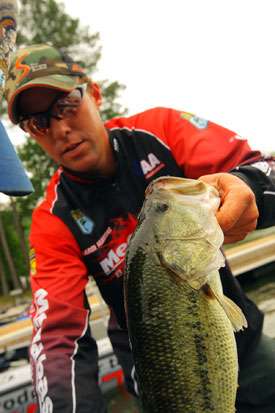
I just finished my annual maintenance of my reels. This is a great time to discuss how important this task is and why you should do it too.
Let me start out by saying that over the years I've fished with a lot of co-anglers. If there's one thing they have in common it's that their reels are noisy. That's a sign they're not taking care of them properly and, as a consequence, their reels are not performing the way they should.
That's a shame because it's messing up their fishing and costing them a lot of extra money when they replace them early. Both those things could be fixed if they'd just spend a few minutes every year oiling and greasing them. It's not hard if you approach the task right.
Before you do anything else make sure you have the maintenance manual and the reel schematic in front of you. If you've thrown it away print one off the Internet or get one from the manufacturer. There are dozens of little parts inside a modern reel. They look like a watch. There's no way you'll get all the gears, springs, clips and washers back together correctly without a diagram and a manual.
Next, get a small cup or dish and fill it with WD 40. You're going to use this as a solvent type of cleaner. Wet a small section of a paper towel or a Q-tip and use it to clean the old oil and grease from the reel parts as you disassemble them.
Do not spray the inside of the reel with WD 40. It's not a very good lubricant, at least in my opinion. It was designed as a water displacement — I'm told that's what WD stands for — and solvent product. Use it that way.
Once you have all that done, put new oil and grease on the parts as you put everything back together. Make sure everything is dry and that you follow the manufacturer's directions when you do this. Use oil where they call for oil; and use grease when they call for grease. And make sure you use the right grade of everything. This is not the time to get creative. They made the reel. Do what they say.
While you're reassembling all of the parts, check everything for wear or damage. If something needs replacing, do it. Don't be penny-wise and pound-foolish. Do it right. It'll save you money in the long run.
When you're done, your reel should be good as new. I fish at least 200 days a year, and I have reels that still work perfectly after four or five years. For most recreational anglers, that length of time can be extended to 10 years.
If you don't feel comfortable doing this yourself, have it done professionally. Most shops charge anywhere between $15 and $50 for the service depending on what they do. That may sound expensive at first, but if you consider what a good fishing reel costs it's a bargain.
I don't do much maintenance during the season except for a little oiling now and then. Water is a killer on oil. If you're fishing in the rain, or your reels get dunked, squirt a little oil where it needs to be put. Again, follow the manufacturer's instructions. (Grease is not usually a problem. Water doesn't bother it much.)
One final thing: Drag washers are critical. Replace them if they show the slightest wear or damage, and always follow the manufacturer's instructions to the letter when you perform maintenance on them. Your drag should be as smooth as silk. If it isn't you'll pay a price somewhere down the line.
Taking care of your reels is no different than taking care of your car or truck. Do it right and you'll be rewarded with dependability. Do it wrong and you'll be in a bad mood about half the time.





